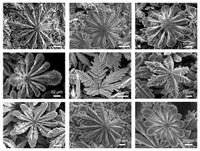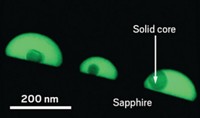Advertisement
Grab your lab coat. Let's get started
Welcome!
Welcome!
Create an account below to get 6 C&EN articles per month, receive newsletters and more - all free.
It seems this is your first time logging in online. Please enter the following information to continue.
As an ACS member you automatically get access to this site. All we need is few more details to create your reading experience.
Not you? Sign in with a different account.
Not you? Sign in with a different account.
ERROR 1
ERROR 1
ERROR 2
ERROR 2
ERROR 2
ERROR 2
ERROR 2
Password and Confirm password must match.
If you have an ACS member number, please enter it here so we can link this account to your membership. (optional)
ERROR 2
ACS values your privacy. By submitting your information, you are gaining access to C&EN and subscribing to our weekly newsletter. We use the information you provide to make your reading experience better, and we will never sell your data to third party members.
Materials
Liquid MOFs debut
Framework compound retains crystal structure and porosity in a high-temperature liquid state
by Mitch Jacoby
October 16, 2017
| A version of this story appeared in
Volume 95, Issue 41
Metal-organic framework (MOF) compounds are a large family of porous crystalline materials composed of metal ions joined by organic linkers. Because of their extreme porosity, which can be tailored via synthesis, MOFs are widely touted for their usefulness in gas separation, gas storage, and catalysis. Liquid versions of these materials could be especially useful because liquids are often more robust and easier to process than crystalline powders. But porous liquids with molecular orderliness are almost unheard of. So a team led by Thomas D. Bennett of the University of Cambridge and François-Xavier Coudert of the French National Center for Scientific Research (who is a C&EN advisory board member) decided to try to make a liquid version of a MOF. They succeeded (Nat. Mater. 2017, DOI: 10.1038/nmat4998). On the basis of X-ray and neutron-scattering methods and various computational techniques, the researchers conclude that heating ZIF-4, which is composed of zinc imidazolate units, to 856 K causes the solid to melt but the high temperature does not cause bond cleavage and decomposition. The data indicate instead that the hot liquid retains the chemical configuration, coordinative bonding, and porosity of the crystal state. The liquid’s properties and structure differ from those of the glassy state obtained upon cooling the material. The team suggests that this type of processing might be used to shape MOFs at the macroscale by using the liquid as a transient state en route to forming a glass or recrystallized product.





Join the conversation
Contact the reporter
Submit a Letter to the Editor for publication
Engage with us on Twitter